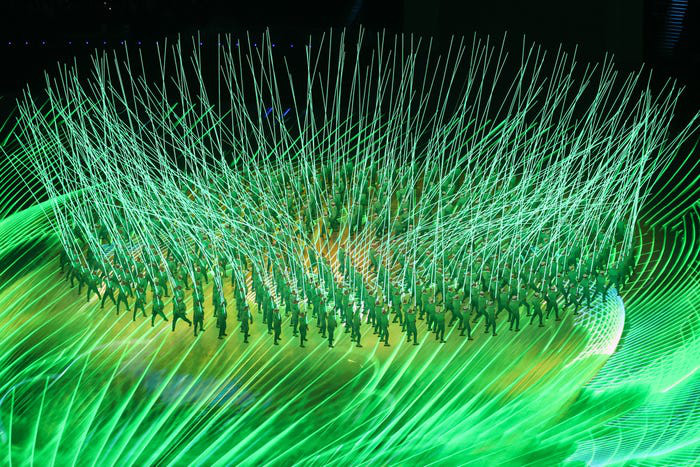China Built the 'World's Largest' LED Screen for the 2022 Winter Olympics Opening Ceremony
It’s 10,552 square meters, uses 40,000 LED modules and reaches beyond 8K resolution

The Olympics has been hailed as one of the greatest sporting events on Earth, so it’s only fitting that they are presented on a screen that matches the Games’ reputation.
To that end, the world’s largest LED screen was unveiled at the Winter Olympics' opening ceremony in Beijing today that’s 10,552 square meters big and uses 40,000 LED modules according to the Global Times.
The screen in question was used as the main stage of the opening ceremony and was built by the China Academy of Launch Vehicle (CALT), which is China's largest developer and producer of carrier rockets (we don't get the connection, either). According to the firm, the screen offers “a visual feast even better than 8K resolution” and claims that it’s the largest LED screen of its kind ever made.
At that size, it’s never going to fit inside our homes—unless, of course, you plan on living inside Beijing’s National Stadium (a.k.a. "the Bird's Nest") where the opening ceremony was held. For now, we’ll just have to settle for the 1.5-meter screen sitting in our living room.
How was it built?
So the world's largest LED display comes with a bit of an asterisk because, obviously, this isn't just one LED screen, but rather many screens all interconnected.
The reason LED displays are chosen over OLED is because of their reliability and reduced cost—OLED simply is more expensive to manufacture at scale and isn't as reliable in these massive configurations. LED screens are also brighter than OLED, which is important when you're lighting up an entire arena.
How bright are we talking? Well, commercial LED displays like the ones that are being used in the Olympic Opening Ceremony are between 4,000 and 10,000 nits. Considering that even the brightest consumer QLED TVs only reach between 2,000 and 3,000 nits, these commercial displays are significantly brighter than what we see on our home TVs.
Get the TV Tech Newsletter
The professional video industry's #1 source for news, trends and product and tech information. Sign up below.
That being said, each 'tile' in this display is likely only one-to-two feet across, which means there are tens of thousands being used to complete the display—a real feat of engineering deserving of its own gold medal.
Nick Pino is the Senior Editor of Home Entertainment at TechRadar and covers TVs, headphones, speakers, video games, VR and streaming devices. He's written for TechRadar, GamesRadar, Official Xbox Magazine, PC Gamer and other outlets over the last decade, and he has a degree in computer science he's not using if anyone wants it.
